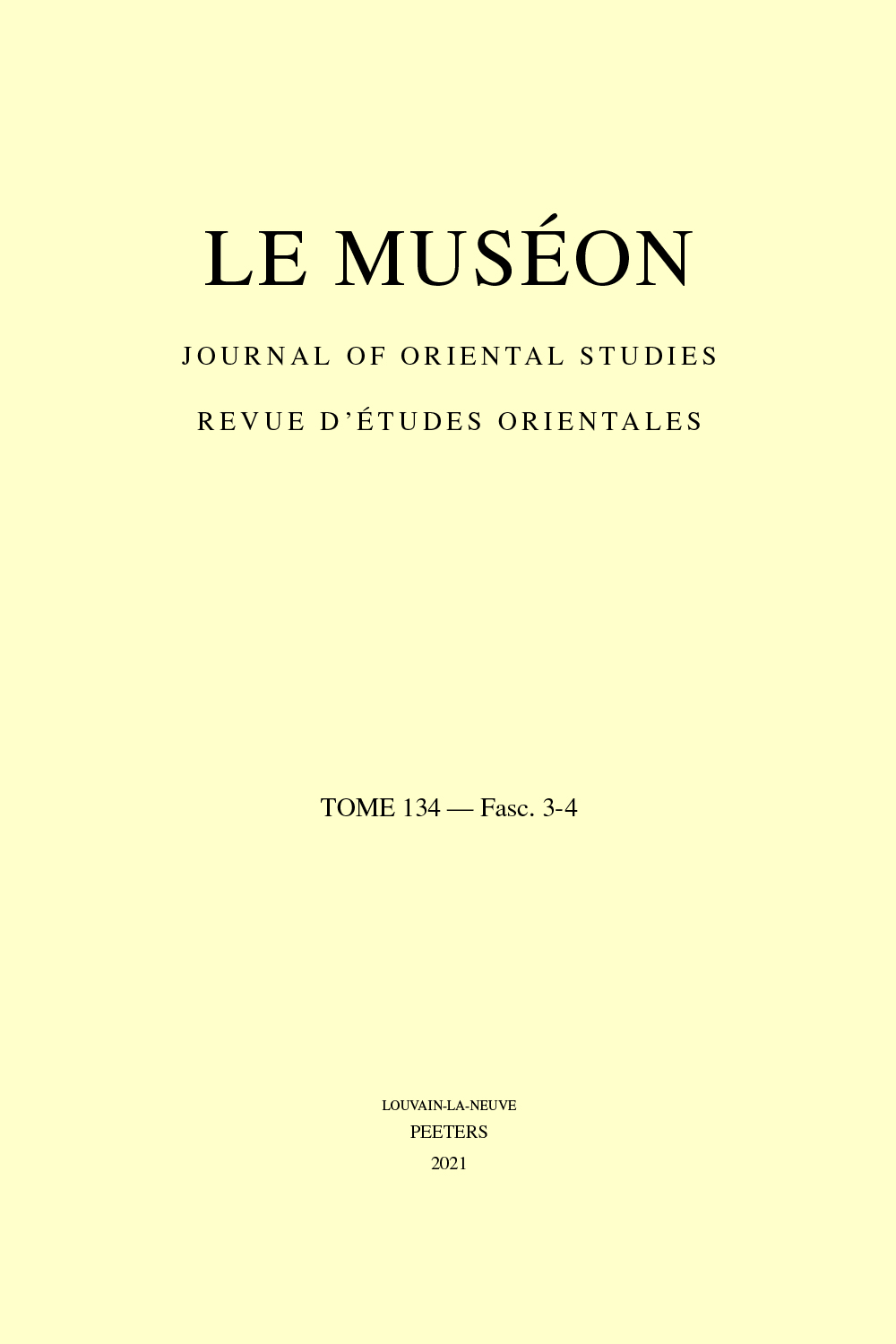 previous article in this issue previous article in this issue | next article in this issue  |

Preview first page |
Document Details : Title: Le Papyrus Bodmer XLI en Édition Princeps l'Épisode d'Èphèse des Acta Pauli en Copte et en Traduction Author(s): KASSER, Rodolphe , LUISIER, Philippe Journal: Le Muséon Volume: 117 Issue: 3-4 Date: 2004 Pages: 281-384 DOI: 10.2143/MUS.117.3.516930 Abstract : L’épisode d’Éphese des Acta Pauli en copte. Édition et traduction du P. Bodmer XLI. Connu en partie par le papyrus grec de Hambourg, où il est malencontreusement privé de tout son début (plus du tiers de l'ensemble), l’épisode d’Éphèse des Acta Pauli a été conservé en copte, beaucoup mieux et surtout dans sa première partie, par le P. Bodmer XLI; il nous rapporte en particulier, avec force détails, la rencontre de Paul avec le lion devenu son ami et acquis à l'idéal ascétique de l'apôtre, leurs étonnants dialogues, amitié dont les ultimes conséquences se font sentir jusqu'à la fin du drame. Si les traductions partielles en avaient déjà fait connaître le contenu, cet article offre l'édition princeps du copte avec la reproduction photographique complète du manuscrit et une nouvelle traduction précédée d’une introduction et suivie des index quasiment exhaustifs. Après avoir indiqué les travaux préliminaires, l’introduction donne une description précise du papyrus, un demi(?)-cahier de dix-huit pages dont quatorze nous sont parvenues, certaines malheureusement lacunaires, mais le grec supplée le plus souvent aux passages manquants. Puis vient une étude sur le dialecte copte lyco-diospolitain propre au P. Bodmer XLI (sigle L56). En troisième lieu, on trouvera l’analyse du texte et quelques considérations sur sa transmission: comme le parallèle grec court sur plus de sept pages, il est possible de déterminer avec certitude dans le copte la présence d’accidents que l’on ne peut ailleurs que soupçonner. Le quatrième point consiste en un excursus autour du nom des six graphèmes coptes autochtones ajoutés à la fin de l’épisode par le copiste. Quelques mots sur la méthode suivie précèdent l’édition du copte (où l’on a pu restituer une part importante du texte grâce au papyrus de Hambourg) ainsi que la traduction dont les notes sont réservées essentiellement aux questions philologiques. Avec les deux papyrus qui l'attestent aujourd'hui, en grec et en copte, l’épisode d’Ephèse, surtout célèbre par le baptême du lion, nous est ainsi rendu presque en entier. The Adventure of Ephesus in the Coptic Acta Pauli. Critical Edition and Translation of P. Bodmer XLI. Partially known from the Greek papyrus of Hamburg, which unfortunately lacks the entire beginning section (more than one third of the entire text), the adventure of Ephesus of the Acta Pauli is best preserved in Coptic; its first section is much more complete in P. Bodmer XLI. It provides a detailed account of the meeting of Paul with a lion, whom he befriends, winning the animal to his ascetic vision together with their remarkable conversation — a friendship, the significance of which is vital for the whole of the tale. If incomplete translations have already sufficiently clarified its content, this article provides the reader with an editio princeps in Coptic together with a complete photographic reproduction of the manuscript and a new translation prefixed by an introduction and followed by exhaustive indexes. After having cited a number of previous treatments of the subject, the introduction gives us a precise description of the papyrus, an eighteen page manuscript, fourteen pages of which have come down to us, some of which are unfortunately incomplete. But the missing passages may be found in the Greek edition. This preface is followed by a study of the Lycodiospolitan dialect in which P. Bodmer was composed (initial L56). The third section is an analysis of the text together with a few questions regarding its transmission. Since the Greek parallel text extends over more than seven pages, it is possible to determine with exactitude the presence in the Coptic text of variations which otherwise would be impossible to determine. Fourth, is an excursus which discusses the name of the six indigenous Coptic graphemes which have been inserted at the end of our account by the copyist. The Coptic critical edition is preceded by a short note on methodology. It was possible to restore a critical part of the Coptic text thanks to the Hamburg papyrus. This is followed by its translation replete with footnotes which essentially deal with philological matters. Thanks to the two papyri in Greek and in Coptic which provide us with the essential text, we have become the beneficiaries of almost the entire adventure of Ephesus, famed especially for its story of the baptism of a lion. |
|


